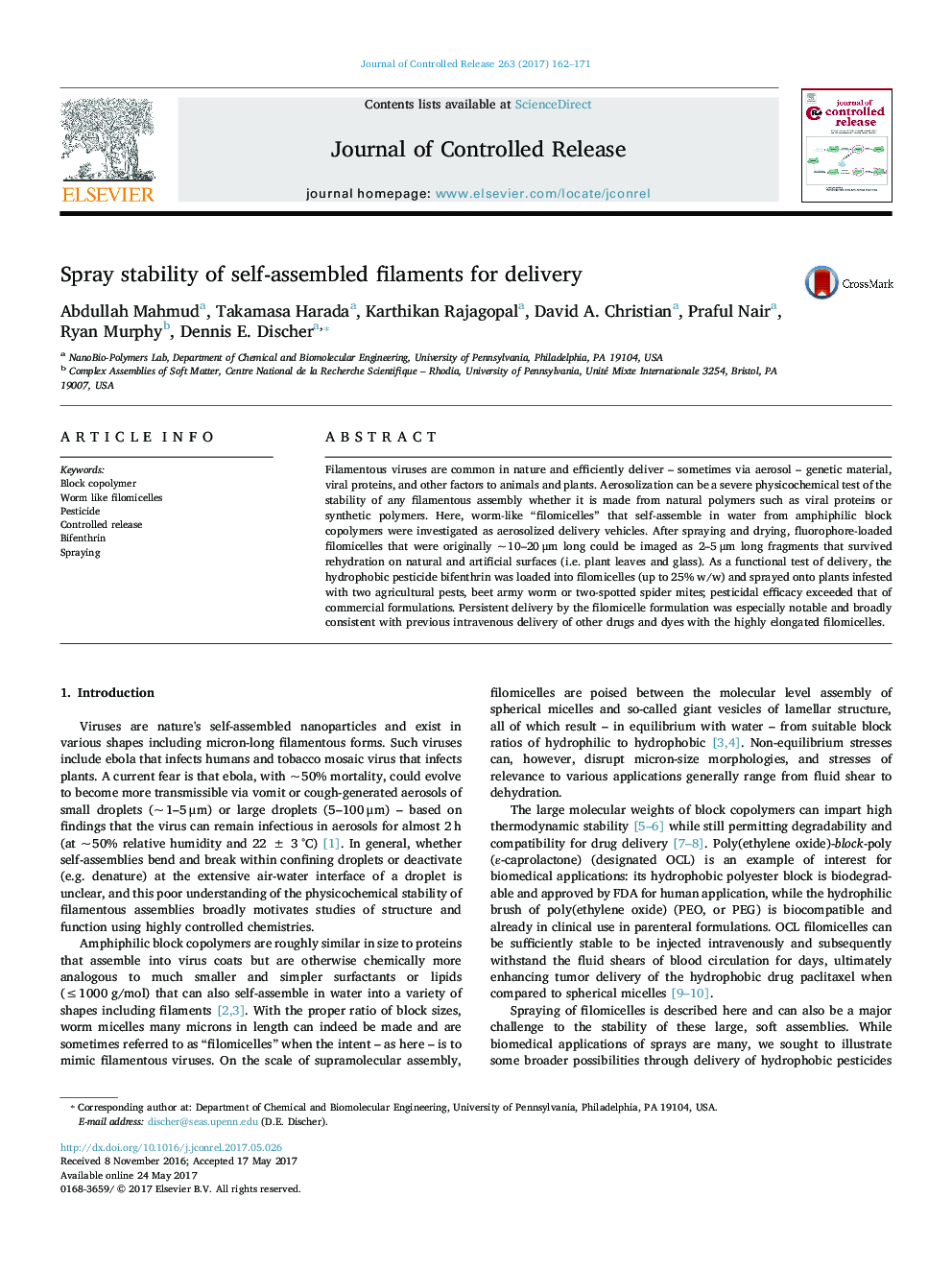| Article ID | Journal | Published Year | Pages | File Type |
|---|---|---|---|---|
| 5433401 | Journal of Controlled Release | 2017 | 10 Pages |
Filamentous viruses are common in nature and efficiently deliver - sometimes via aerosol - genetic material, viral proteins, and other factors to animals and plants. Aerosolization can be a severe physicochemical test of the stability of any filamentous assembly whether it is made from natural polymers such as viral proteins or synthetic polymers. Here, worm-like “filomicelles” that self-assemble in water from amphiphilic block copolymers were investigated as aerosolized delivery vehicles. After spraying and drying, fluorophore-loaded filomicelles that were originally ~ 10-20 μm long could be imaged as 2-5 μm long fragments that survived rehydration on natural and artificial surfaces (i.e. plant leaves and glass). As a functional test of delivery, the hydrophobic pesticide bifenthrin was loaded into filomicelles (up to 25% w/w) and sprayed onto plants infested with two agricultural pests, beet army worm or two-spotted spider mites; pesticidal efficacy exceeded that of commercial formulations. Persistent delivery by the filomicelle formulation was especially notable and broadly consistent with previous intravenous delivery of other drugs and dyes with the highly elongated filomicelles.
Graphical abstractDownload high-res image (98KB)Download full-size image
